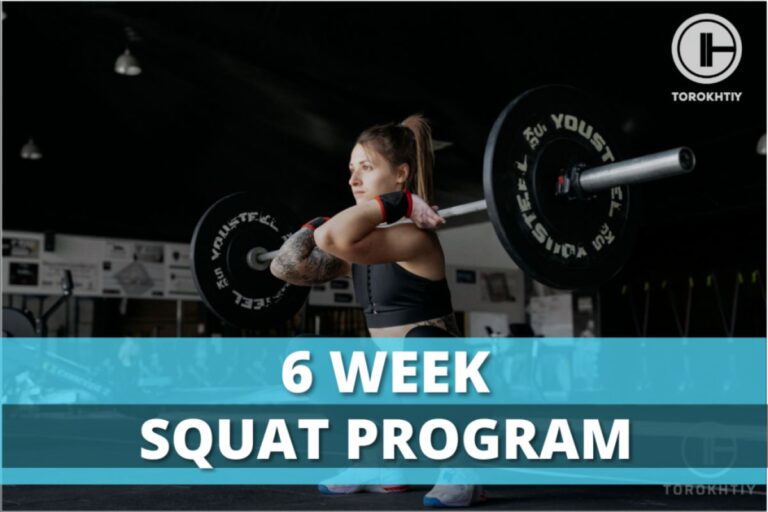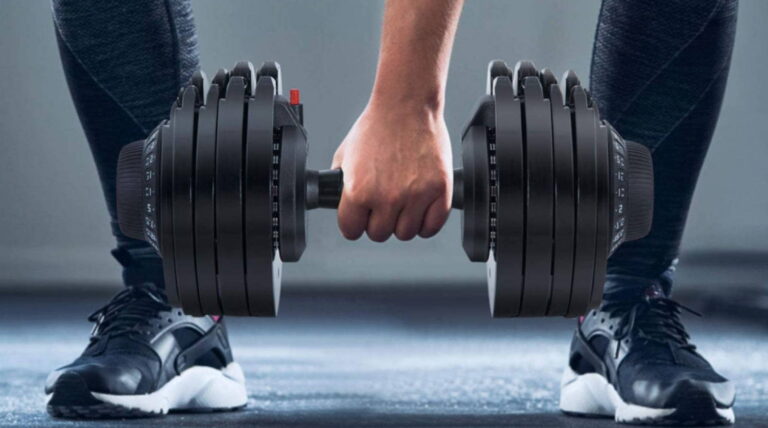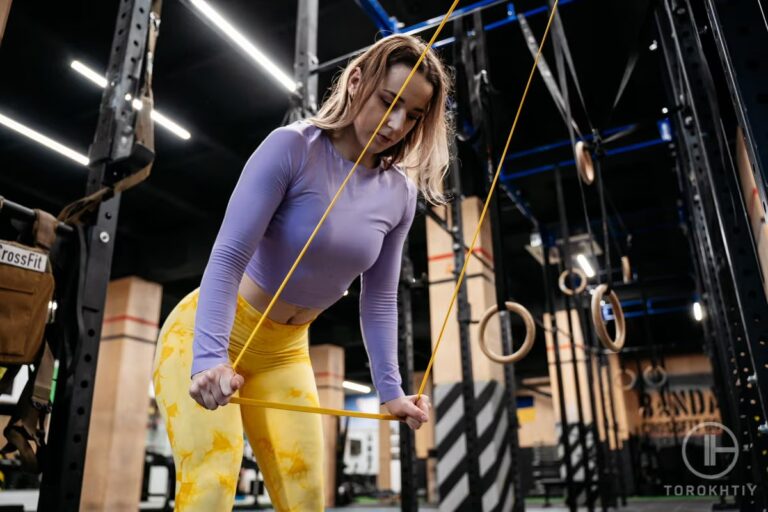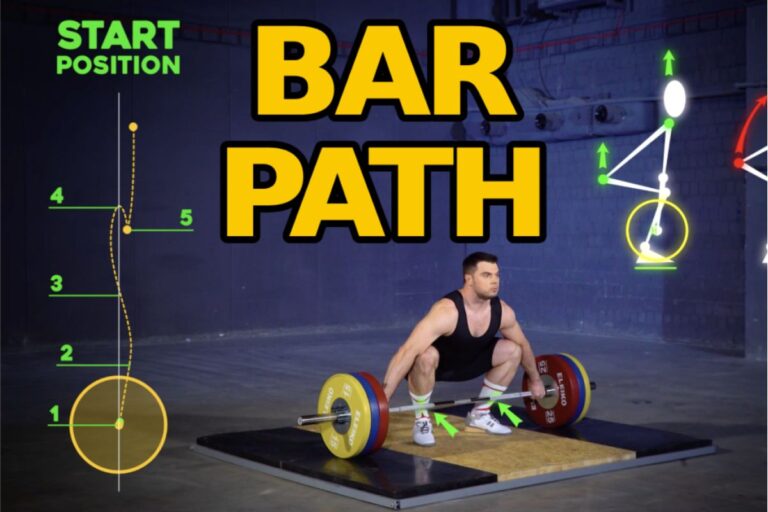Knee Pain From Lunges: Reasons & How to Fix It
When performing lunges or squatting, you target to strengthen your lower body muscles and also stabilize the hip and knee joints. Striving to make legs durable and strong, some of us have no limits in workout performance and its frequency that eventually can result in knee injury from lunges, discomfort, pain, or inflammation of the particular muscles and joints.
You may face such an issue as knee pain from lunges that most of us prefer to neglect in the beginning and continue tough training. But, all problems start from minor symptoms. So, you need to analyze what’s going wrong.
In this article, we gathered all the necessary information on the essence of knee pain during lunges, what are the main reasons, ways to prevent and fix the problem, what exercises are useful for your knees and supportive muscles for you to be able to foresee and eliminate serious consequences of the knee ache.
Knee pain from lunges reasons – exercises with lunges are default exercises an experienced athlete and regular gym-goer got used to incorporating into their regime to strengthen their glutes, quadriceps, and hamstrings. Moreover, lunges are useful to improve body coordination and balance, enhance muscular symmetry, and posture.
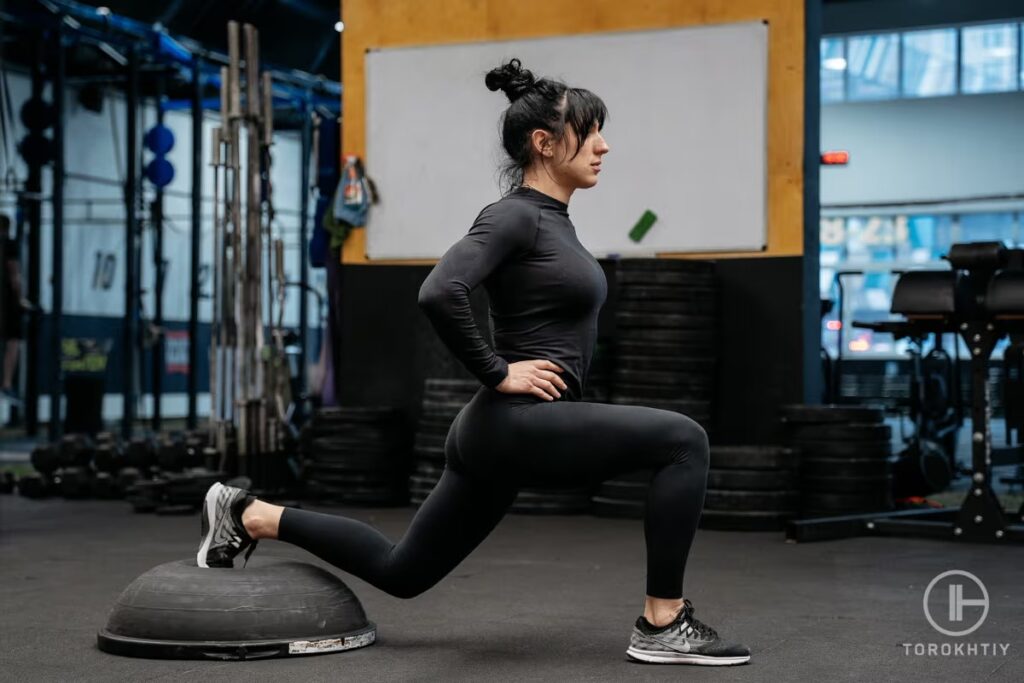
However, with regular intense drilling at the gym, most athletes sooner or later experience discomfort and knee pain when lunging and doing simple squats. Not being able to bear this ache, some are forced to skip training for some time hoping that this issue will resolve itself. Unfortunately, it doesn’t work and you should pull yourself together and follow specific steps to fix knee hurt when lunging.
So, in this overview, you’ll get a detailed description of how to fight this problem, particular reasons for knee pain, and receive essential tips on how to recover and prevent knee pain from lunges. Follow the guide based on experts’ statements and certified personal trainers’ recommendations that will address your problem once and all.
Intro to Knee Pain From Lunges
Why do people do lunges? The major reason is to work out their lower body, particularly the quadriceps, and glutes. The technique is essential here because the way an athlete performs lunges influence what muscles will be activated more and which pressure will affect their quads and butt:
- The first point is when putting more weight on the toes of the front leg. This means the quadriceps are involved most in this case.
- The second point is if you put more weight backward to the heel, then glute muscles predominantly work there.
The kneecap (aka patella) is situated inside of the quadriceps tendon, so the more quadriceps you use while lunges, the more the knee hurts. The deeper you make a lunge, the more your quads are stretching over the knee joint. Thus, the more the kneecap compresses on the thigh, and the patella moves up and down in the femur groove when you bend and straighten the knee regularly.
Lunges at extreme angles can be stressful for your joints and result in knee pain. It also relates to the improper lunge technique: if leaning too far forward, you’ll fail to bend your knee to a 90-degree angle. That may result in knee injury and poor body balance.
Another issue refers to weak hip and glute muscles, so the knee pushes out past your toes because the hips can’t be in line with your knees. It causes extra pressure on the knee that leads to knee ache.
Nevertheless, the problem of pain in the knees can be resolved if following specific exercises and doctor’s recommendations. Although you’ll feel some discomfort in the beginning that means positive changes, i.e. your body is adjusting to the correct and thoughtful movements. Such exercises aim to facilitate power, endurance, and range of motion in the joints.
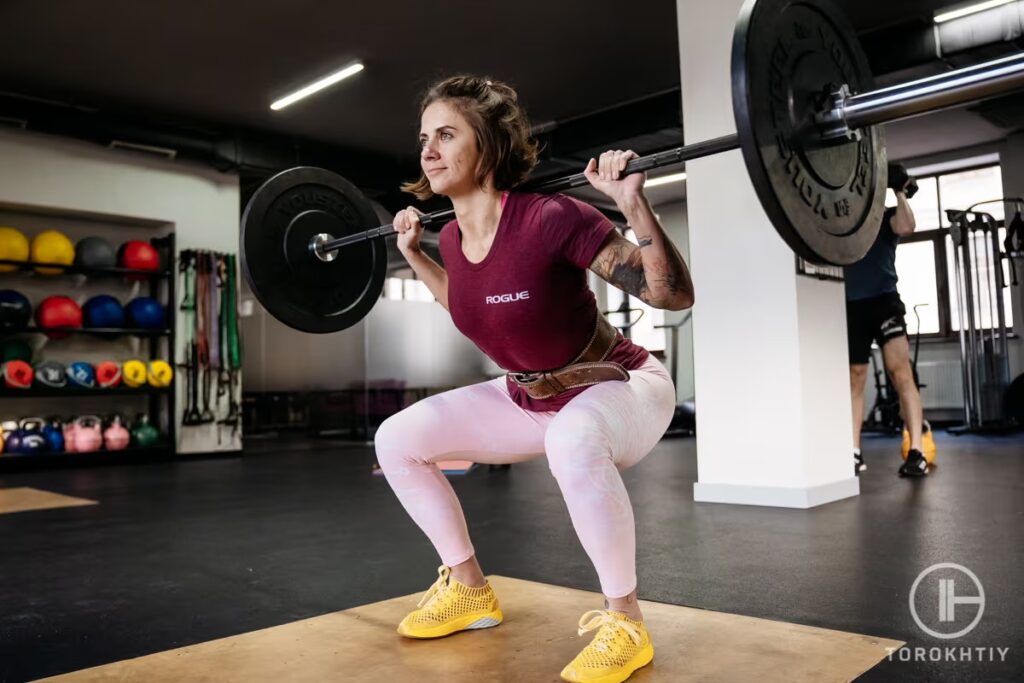
What Causes Knee Pain From Lunges
1. Weak Hip and Glute Muscles
The pain in knee when lunging results from improper form or muscle imbalance. When you step forward into a lunge, your knee naturally pushes forward. But if you have weak hips and glutes, your knee can push out much farther past your toes.
Instead, hips should keep it in line with toes with your bent knee perpendicularly placed to it. Because of weak glute muscles, your knee won’t be aligned over the middle of your foot.
2. Kneecap Compression
Lateral patellar compression syndrome occurs behind the kneecap, exactly this is a pain under and around it, where a patella compresses on your thigh bone. It can be named as patellofemoral pain, meaning ‘patella’ is a kneecap and ‘femur’ is a thigh bone.
The kneecap located in the tendon connects thigh muscles to the shin bone and protects your knee front part. This syndrome may result from dislocation, poor alignment of the patella, its overtraining, and too tight or too weak thigh muscles.
3. Lliotibial Band Syndrome
Knee pain during lunges can be also connected to the iliotibial band syndrome (ITBS) that is caused by muscle tightness and inflammation because of friction of the hip and knee joints to the fascia.
But, before outlining how to relieve this pain, let us explain what an iliotibial band is. This is a thick tendinous fascia that extends from the hip outside portion to the knee. The best and the easiest way to quit the ache is to strengthen the hips and make stretching of the iliotibial band.
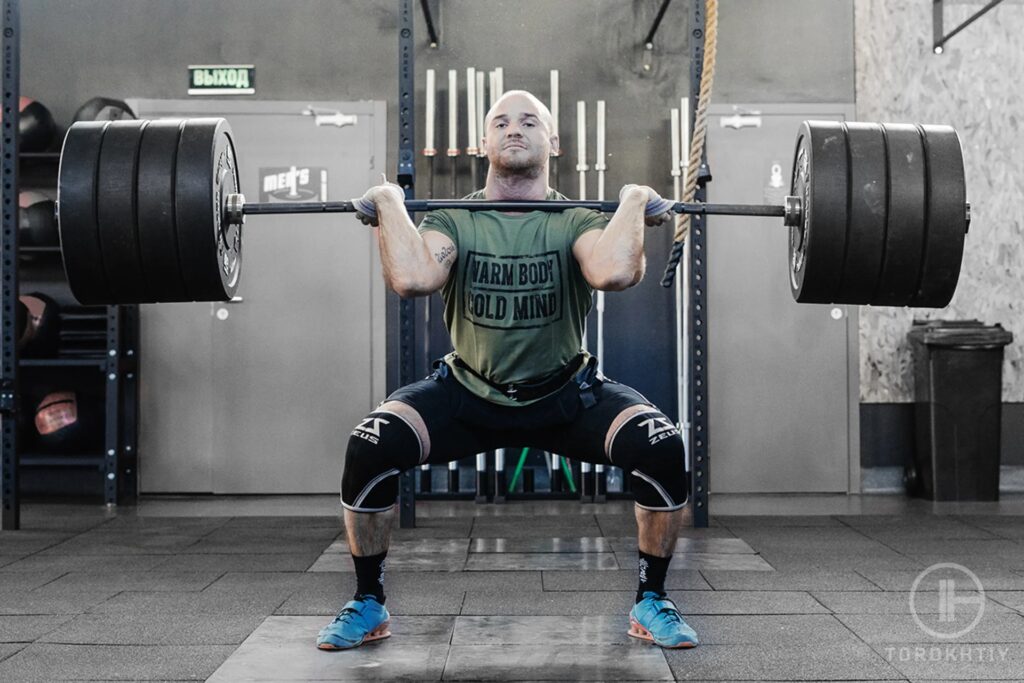
How to Treat and Prevent Knee Pain from Lunges
1. Fight Imbalance
The best solution for eliminating knee pain after lunges is to strengthen your inner thighs, glutes, and hip muscles, including the deep stabilizing muscles of your hip joint. To resolve this issue you should try to do some exercises such as:
- Modified bridges that work out inner thighs and glutes;
- Clamshells that enable you to stabilize your core and focus on hip rotation;
- Single leg balancing will strengthen your hip and ankle muscles, so it’ll enhance knee stability;
- Step-ups like going up and downstairs are a functional exercise that can significantly relieve pain;
- Single leg press facilitates muscle imbalance by using each leg at a time and varying weight loads are helpful in preventing the use of your stronger leg most of the time.
2. Work Out the It Band
It’s quite difficult to stretch the IT (iliotibial) band. And if you succeed to do it right, you may feel a little bit of an unpleasant ache in this area. But, it’s a good sign: it helps to stretch your IT band and mitigate pain in the knee.
Try to foam roll it: this method is quite effective in fighting an iliotibial band syndrome which means your thigh side muscles are tight and inflamed resulting in muscular imbalance and worsening the movements.
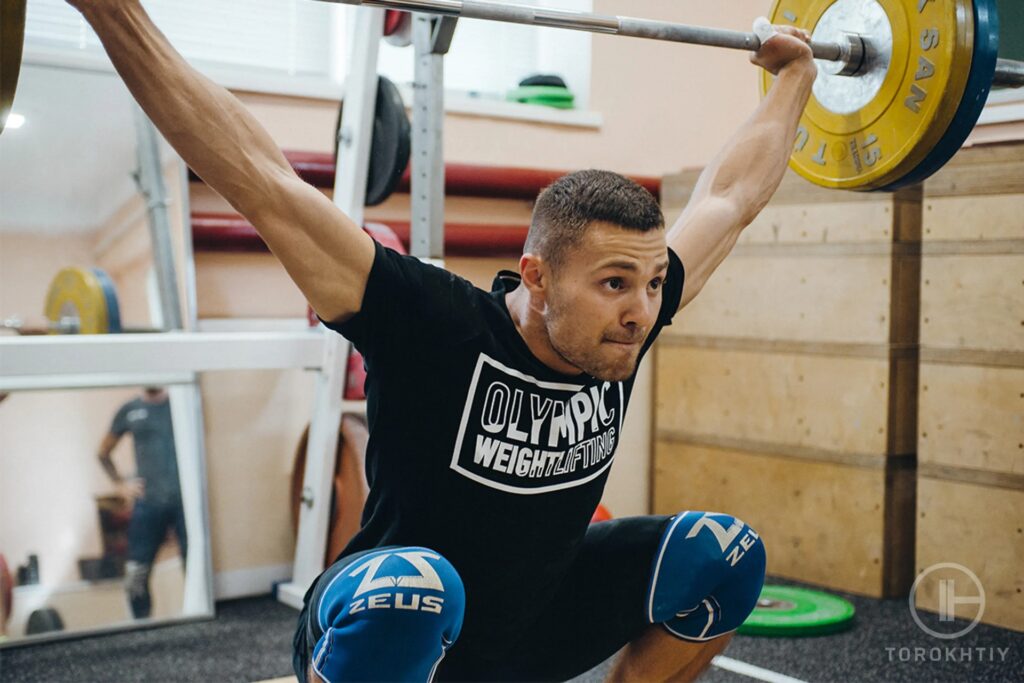
3. Deload the Movement
This means that it’s important to focus on the correct lunge technique and make your leg muscles stronger. If you do it and pain goes away, then you have a muscle-based ache, but not a knee one. It means that it’s time to work on lunge proper performance.
4. Doing Hip Hinge
When performing lunges, your hips and knees bend together, but all the movement itself goes from the hip, not from the knee motion. Hip hinge involves the trunk forward-leaning, while your spine maintains a straight position since the motions come from the hips, and there’s no need to bend your spine.
5. Neuromuscular (Motor) Control to Limit Knee Valgus
Body coordination is vital for stabilizing your lower muscles to perform lunges properly. With the hip hinge, neuromuscular control will assist you to correct knee valgus, so you’ll be able to prevent knee collapse in towards another knee. You’ll avoid extra stress on your knee joints and improve your lunge technique with no hassle.
How To Do The Lunges Correctly?
1. Pay Attention to the Correct Technique
Many of you wonder ‘why do lunges hurt my knees if I do everything right and don’t skip training’. The answer refers to the right technique of lunge performance that should look as follows:
- Stand straight with your feet hip-width.
- Step forward with your right foot, bending the knee at a 90-degree angle. It should be enough space to bend the knee to have good balance when standing in such a position.
- Your left knee should also be bent at a 90-degree angle, but placed on the floor.
- Hold the lunge for several seconds and return to the initial position by pressing down through the heel of the forward leg and at the same time squeezing the glutes to return to the standing position.
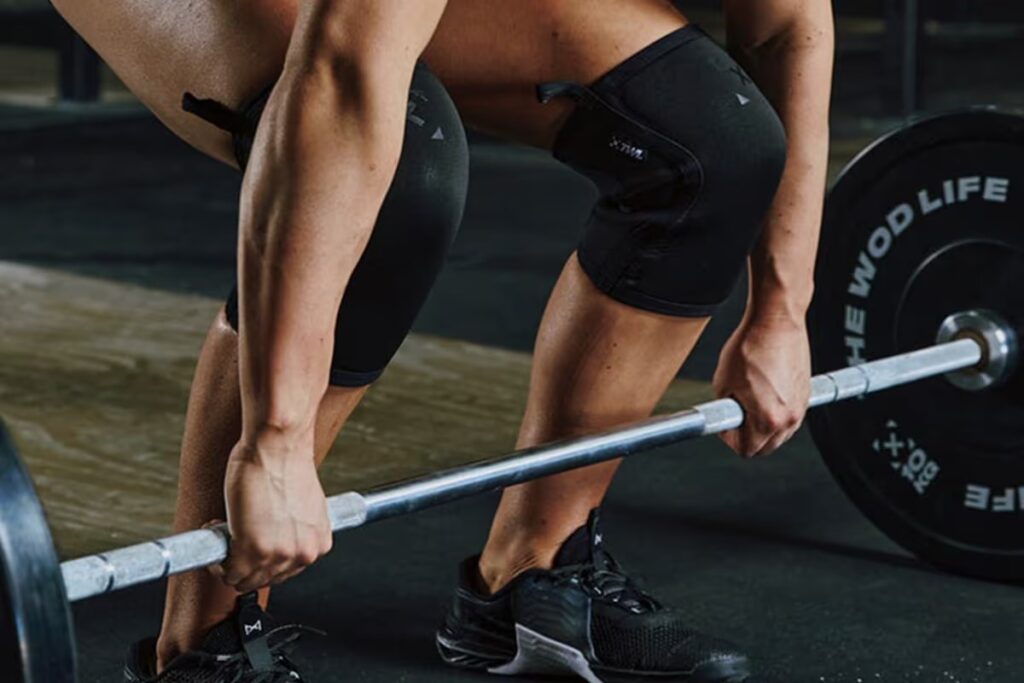
Make Some Recovery Exercises to Avoid Knee Pain
Even though lunges are a simple exercise that doesn’t require additional equipment, they can hurt your knees greatly if neglecting correct performance and miss recovery days. Several exercises can activate and prepare your hips and glutes to do lunges well and build your lower body endurance:
- Like lunges, glute bridges aim to develop glutes and quads. To do this exercise lie on your back with bent knees and feet flat on the floor. Squeeze your glutes to lift your body toward the ceiling by forming a straight line from your neck to the knees. Lower your body down, and rest your back on the ground.
- Chair squats will help you to keep the right angle in your knees: you should place a chair behind you and stand facing away from it. Start squatting backward slowly until your glutes touch the chair. Stand back up and repeat. Such a squat modification targets your lower body muscles and it doesn’t put a strain on the joints like full squats and lunges.
- High knee walks will also help you to get the knees at a 90-degree angle. The way to perform it is quite simple: stand with your legs hip-width apart and place your hands on your hips. Lift your right knee in front of you and hold at a 90-degree angle for a while, then step forward and place the right foot down. Change the leg and repeat.
Stretching Exercises
Stretching exercises are ideal to improve mobility and adaptability. Here are a few effective stretches you should consider doing:
- Calf stretch
- Quadriceps stretch
- Hamstring stretch
- Hip flexor stretch
- Figure four stretch
- Standing hamstring stretches
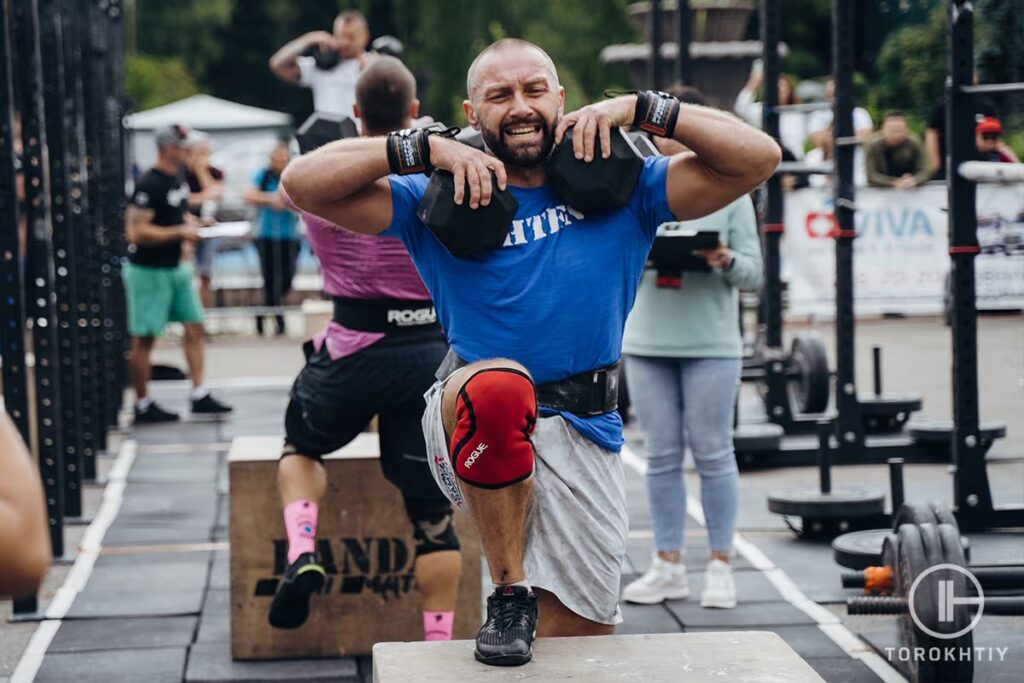
FAQ
Are Lunges Bad for Knees?
Lots of sportsmen are asking ‘are lunges bad for knees’ since this exercise is fundamental in building a strong lower body, for instance, it’s vital for avid lifters. If not overdoing, lunges can prevent knee pain and injury. Even if an individual has some knee issues such as osteoarthritis, doing lunges can benefit their health.
This simple exercise affects important muscle groups around the knee by building their strength, endurance, and improving their range of motion.
Why Do Lunges Hurt My Knees?
Most of us perform lunges by loading a dominant knee, with the dominant leg bearing almost all the weight on the toes. That means that the body’s weight is distributed the way the knee performs the majority of the work. Additionally, If you have knee osteoarthritis, rheumatoid arthritis, or tendonitis, or other knee issues, concentrate on how you do lunges during the workout.
We’ve already mentioned the reasons for this pain: it can be weak hips and glutes, poor balance, and wrong exercise technique.
How to Do Lunges With Bad Knees?
If you’re tormented by the ache in your knees and joints while doing lunges and try to define how to do lunges with bad knees, here’s the answer. It’s possible to change the exercise performance by trying the option of the modified lunge.
The following variants will lessen the pain and won’t hurt your knee condition at all. The first exercise is a halfway lunge when you bend the knee on half of the full lunge that will decrease the pressure on the knee, yet your hamstrings stay toned.
The second option is reverse lunges: instead of stepping forward, you can try a backward lunge. This way you can focus more on the technique and balance, but not on transforming the weight to the forward leg with all the tension to the toes.
Conclusion
To summarize all the above-mentioned information, it’s vital to know personal limits in workout intensity and balance your movements to prevent knee pain from lunges and while performing any other functional, strength, or cardio training. Knowing how to distribute weight efficiently during the lunges and squats, and following the right technique can lead to better performance and development of the leg muscles.
By following our tips and recommendations, you’ll benefit from your workout routine without being disturbed by sudden pain in the joints and overtraining. But, if you want to get more advice on how to correct your lunge technique, make it pain-free, or choose alternatives to work out leg muscles, don’t hesitate to write to us below. Our team of dedicated sports experts is here to help you fight your issue and enjoy each WOD without pain.
Also read:
- Knee Pain From Leg Press
- Knee Pain From Treadmill
- Knee Pain From Lifting
- Peloton Knee Pain
- Knees Sore After Workout
- Why Do My Knees Hurt When I Squat
References:
- Exercises for Stronger Hips and Knees // Very Well Fit: https://www.verywellfit.com/exercises-for-stronger-hips-and-knees-3120412
- Do hip muscle weakness and dynamic knee valgus matter for the clinical evaluation and decision-making process in patients with patellofemoral pain? // National Library os Medicine: https://pubmed.ncbi.nlm.nih.gov/29157738/
- Acute Effects of Deep Tissue Foam Rolling and Dynamic Stretching on Muscular Strength, Power, and Flexibility in Division I Linemen // Journal of Strength and Conditioning Research: https://journals.lww.com/nsca-jscr/Fulltext/2017/04000/Acute_Effects_of_Deep_Tissue_Foam_Rolling_and.3.aspx
- Neuromuscular interactions around the knee in children, adults and elderly // National Library os Medicine: https://pubmed.ncbi.nlm.nih.gov/25232523/
Why Trust Us?
With over 20 years in Olympic Weightlifting, our team does its best to provide the audience with ultimate support and meet the needs and requirements of advanced athletes and professional lifters, as well as people who strive to open new opportunities and develop their physical capabilities with us.
By trusting the recommendations of our certified experts in coaching, nutrition, dietology, and sports training programming, as well as scientific consultants, and physiotherapists, we provide you with thorough, well-considered, and scientifically proven content. All the information given in the articles concerning workout programming, separate exercises, and athletic performance, in general, is based on verified data. We ensure that you can rely on our professionals’ pieces of advice and recommendations that can be treated as personalized ones which will benefit you and fully meet your needs.
The product testing process is described in more detail here
Author: Zinaida Bondarenko
Coach, Physiotherapist
Physical rehabilitation experience: 10 years
Zinaida was a member of the national team of Ukraine in rhythmic gymnastics, accumulating 15 years of professional sports experience. She holds certifications in functional training, rehabilitation, kinesiotherapy, specializing in working with athletes across various domains: recovery, rehabilitation, functional and mobility training, General Physical Preparedness (GPP), as well as injury prevention through specific program design. Moreover, she focuses on athlete and coach education to enhance performance and prevent injuries.


